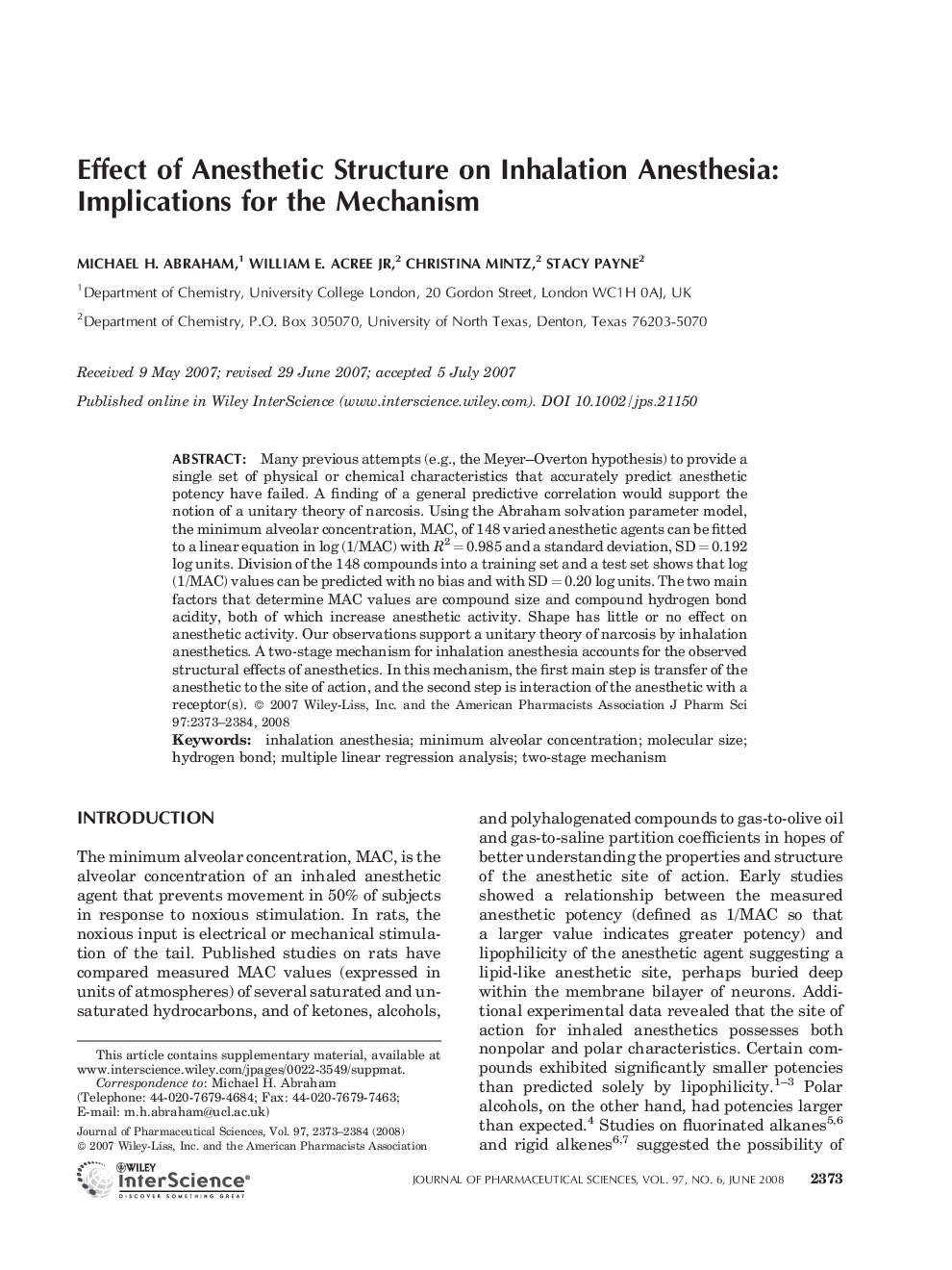| کد مقاله | کد نشریه | سال انتشار | مقاله انگلیسی | نسخه تمام متن |
|---|---|---|---|---|
| 2486890 | 1114396 | 2008 | 12 صفحه PDF | دانلود رایگان |
عنوان انگلیسی مقاله ISI
Effect of Anesthetic Structure on Inhalation Anesthesia: Implications for the Mechanism
دانلود مقاله + سفارش ترجمه
دانلود مقاله ISI انگلیسی
رایگان برای ایرانیان
کلمات کلیدی
موضوعات مرتبط
علوم پزشکی و سلامت
داروسازی، سم شناسی و علوم دارویی
اکتشاف دارویی
پیش نمایش صفحه اول مقاله

چکیده انگلیسی
Many previous attempts (e.g., the Meyer-Overton hypothesis) to provide a single set of physical or chemical characteristics that accurately predict anesthetic potency have failed. A finding of a general predictive correlation would support the notion of a unitary theory of narcosis. Using the Abraham solvation parameter model, the minimum alveolar concentration, MAC, of 148 varied anesthetic agents can be fitted to a linear equation in log (1/MAC) with R2Â =Â 0.985 and a standard deviation, SDÂ =Â 0.192 log units. Division of the 148 compounds into a training set and a test set shows that log (1/MAC) values can be predicted with no bias and with SDÂ =Â 0.20 log units. The two main factors that determine MAC values are compound size and compound hydrogen bond acidity, both of which increase anesthetic activity. Shape has little or no effect on anesthetic activity. Our observations support a unitary theory of narcosis by inhalation anesthetics. A two-stage mechanism for inhalation anesthesia accounts for the observed structural effects of anesthetics. In this mechanism, the first main step is transfer of the anesthetic to the site of action, and the second step is interaction of the anesthetic with a receptor(s).
ناشر
Database: Elsevier - ScienceDirect (ساینس دایرکت)
Journal: Journal of Pharmaceutical Sciences - Volume 97, Issue 6, June 2008, Pages 2373-2384
Journal: Journal of Pharmaceutical Sciences - Volume 97, Issue 6, June 2008, Pages 2373-2384
نویسندگان
Michael H. Abraham, William E. Jr, Christina Mintz, Stacy Payne,